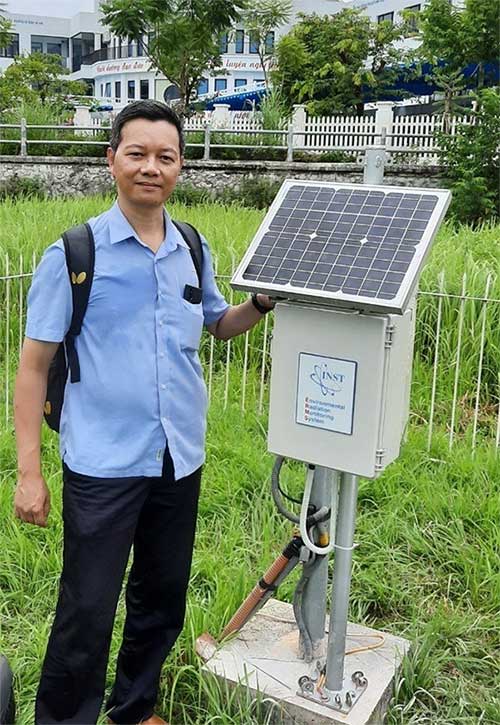The early warning system developed by the research team from the Institute of Nuclear Science and Technology (INST) provides accurate data to assist in the management of radiological incidents.
This system was presented by Nguyen Duc Tuan, a representative of the research team, during a specialized report session on radiation measurement and environmental radiation early warning monitoring networks in Vietnam, held as part of the 15th National Conference on Nuclear Science and Technology from August 9 to 11 in Nha Trang City.
Mr. Tuan stated that the VinaERMS-INST system, designed by him and his colleagues, is integrated into the national environmental radiation monitoring network (ERMS) and is capable of measuring gamma dose rates and operating continuously outdoors.
With two primary functions—measuring gamma dose rates and monitoring data—VinaERMS-INST enhances the capability for early warning of radiological incidents and aids regulatory agencies in tracing sources and forecasting the spread of radiation at the local level.
The structure of VinaERMS-INST includes an energy compensation probe assembly, which has a wide measurement range from natural background radiation levels to 1 Sv/h. This data helps identify minor changes in natural radiation levels and measure high dose rates, thereby enabling early warning of radiological incidents. All radiation probes and functional electronic blocks are housed in a protective box rated IP-66.
The system can operate independently and continuously outdoors without relying on the power grid, using only solar energy and backup batteries.
Mr. Tuan mentioned that users can access and control the system using a smart device such as a computer, tablet, or smartphone with an Internet connection.
With its data monitoring function, measurement data from the system in real-time will be stored on an SD card and displayed on an LED or LCD screen. IoT (Internet of Things) technology is applied to record data transmitted from the monitoring station via GSM/wifi/4G/3G/GPRS networks and store it on cloud servers, as well as communicate information to users from the operational center.
The model can also be equipped with weather sensors such as temperature, humidity, atmospheric pressure, and rainfall, providing users with information on the relationship between the recorded environmental radiation dose and weather data in the measurement area.

The VinaERMS-INST system installed at Mai Pha meteorological station, Lang Son in July 2022. (Photo: Research Team).
According to the research team, VinaERMS-INST provides high accuracy radiological dose measurements at monitoring points. As a domestically produced system, it allows for proactive operation, maintenance, and repair of the national environmental radiation monitoring network. The cost is only two-thirds that of imported systems with similar functions.
With funding from equipment enhancement projects, through research topics and sponsorships from South Korea, Japan, etc., INST has currently installed 12 ERMS systems in several provinces across Vietnam. Among them are 7 Fuji systems (Japan) in Lang Son, Hai Phong, Mong Cai, Bai Chay, Lao Cai, Cao Bang, and Nghe An, and 5 Sara systems (Envinet, Germany) in Son La, Da Nang, Hanoi, and Bach Long Vi Island.
Mr. Tuan indicated that in the near future, the research team will upgrade the equipment to include the capability of measuring radiation spectra rather than just intensity, enabling the detection of artificial isotopes in the environment. The system is also expected to integrate with meteorological data collection from sensors such as temperature, humidity, atmospheric pressure, and rainfall to observe environmental fluctuations.




















































